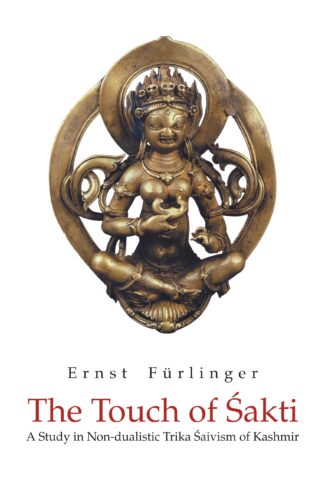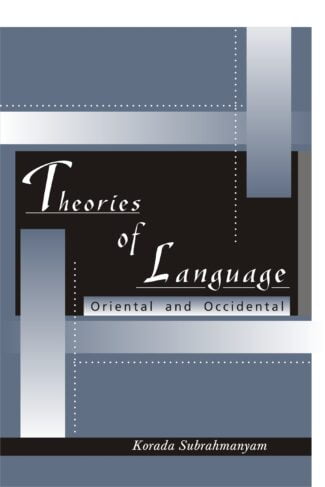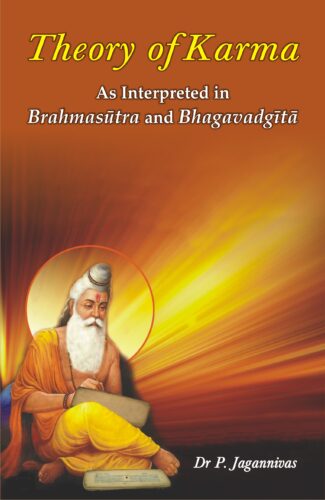Showing 1021–1030 of 1165 results

This volume presents the translation and interpretation of thirteen principal Upanisads such as Brhadaranyaka, Chandogya, Taittiriya, Aitareya, Kausitaki, Kena, Katha, Isa, Mundaka, Prasna, Mandukya, Svetasvatara and Maitri along with the outline of the philosophical wisdom inherent in these Upanisads. It also features the recurrent and parallel passages in these principal Upanisads and the Bhagavadgita.
Upanisads are an authoritative compendium of Indian metaphysics. They represent the earnest efforts of profound thinkers of early India to solve the problems of origin, nature, and destiny of man and the universe, more technically the meaning and value of knowing and being. They are replete with sublime conceptions and with intuitions of universal truth. These Upanisads sets forth two opposing theories: one of mundane life and the other relating to a life that is in search of the Supreme Reality and man’s ultimate aim.
Though, traditionally, 108 Upanisads are well known and subject to various studies, there are around 200 Upanisads in toto. Of them, this volume contains the translation and interpretation of thirteen principal Upanisads such as Brhadaranyaka, Chandogya, Taittiriya, Aitareya, Kausitaki, Kena, Katha, Isa, Mundaka, Prasna, Mandukya, Svetasvatara and Maitri along with the outline of the philosophical wisdom inherent in these Upanisads. It also features the recurrent and parallel passages in these principal Upanisads and the Bhagavadgita.

This volume presents an overview of the historical development of the Kashmirian Saiva traditions, especially of the non-dualistic system, Trika, and deals with the bodily experience of the transcendent power, the Sakti, in the context of the Saiva Kundalini-Yoga.
The Kashmirian Shaiva tradition in its non-dualistic form in particular is one of the richest philosophical traditions of India that have survived to the present day. This book by the noted scholar, Dr Furlinger, deals with the bodily experience of the transcendent power, the Shakti, in the context of the Shaiva Kundalini-Yoga. In an insightful introduction, the scholar presents an overview of the historical development of the Kashmirian Shaiva traditions, especially of the non-dualistic system, Trika, made famous by the work of its famous proponent, Abhinavagupta. He studies the theme of shaktisparsha in selected texts of non-dualistic Trika Shaivism of Kashmir, focusing on Utpaladeva’s Shivastotravali of the tenth century and Abhinavagupta’s Tantraloka of the eleventh century. The texts are analysed along with a noted commentary associated with each to shed light on the different contexts and meanings in which the word sparsha occurs in connection with Shakti, the divine power, revered as the Goddess. The study examines sparsa as one of the highest stages in the spiritual ascent in the Tantraloka and its corresponding description in the Shivastotravali. The difference in the notion of sparsa in the two texts is also brought out. It thus reveals the liberating and critical potential of the non-dualistic Shaiva tradition of Kashmir. The book will interest scholars and students of Indology associated with Indian religious-philosophical traditions.
The Ramayana has effected incessantly the Indian consciousness for more 2,500 years. Its moral and ethical impact and relevance are par excellence of its poetic beauty and dramatic narrative. It gave a new praxis to the dharmic mores of the Indian psyche. The Valmiki Ramayana as Epic and Dharmasastra: Reading the adikavya as an Ethical Guide is derived from a series of three lectures that Prof. Dr Robert Goldman delivered at the Department of Philosophy, Jadavpur University in 2016 as a visiting professor.
The book, while taking an overview of the Sanskrit epics as poetry, history and science, takes one through the dilemma that Dasaratha faces due to his denying kingdom to Rama and the latter’s going for vanavasa, the ethical and moral challenges that Rama faces in his war with Ravana and others, and in the ethical shift that Rama undergoes from his compassionate and self-sacrificing moral code to a more rigid dharmasastra and arthasastra-oriented mode of royal conduct in the last part of the epic. All this, looking back over the various situations, episodes and responses of the principal characters in the epic drama.
The Ramayana thus functions not only as as a grand kavya and an ithihasa, but also as a dharmasastra and a nitisastra as well.

The Netra Tantra “Tantra of the (Third) Eye (of Siva)”, also called Mrtyujit (Conqueror of Death), is one of the fundamental scriptures of non-dualist Kashmir Saivism or Trika. It is the only Tantra having the Third Eye of Siva as title and theme, and it contains three important chapters on Yoga, relating to three ways of overcoming death.
This book, besides giving an introduction to the Tantra, contains an interpretation of the three chapters; Chapter 1 deals with the Eye of Siva, Chapter 7 with subtle Yoga, and Chapter 8 with supreme Yoga. The same texts are presented in Devanagari, transliteration and translation, including the eleventh-century commentary of Ksemaraja, illustrious disciple of Abhinavagupta. The Appendix contains illustrations of the theme of trinetra from different sources, mainly connected with Kashmir, as well as a comparative study on “The spiritual eye in the Christian mystical traditions”.
This book is an important contribution to the studies on non-dualist Saivism or Trika, and especially to its Yoga.
The Netra Tantra “Tantra of the (Third) Eye (of Siva)”, also called Mrtyujit (Conqueror of Death), is one of the fundamental scriptures of non-dualist Kashmir Saivism or Trika. It is the only Tantra having the Third Eye of Siva as title and theme, and it contains three important chapters on Yoga, relating to three ways of overcoming death.
This book, besides giving an introduction to the Tantra, contains an interpretation of the three chapters; Chapter 1 deals with the Eye of Siva, Chapter 7 with subtle Yoga, and Chapter 8 with supreme Yoga. The same texts are presented in Devanagari, transliteration and translation, including the eleventh-century commentary of Ksemaraja, illustrious disciple of Abhinavagupta. The Appendix contains illustrations of the theme of trinetra from different sources, mainly connected with Kashmir, as well as a comparative study on “The spiritual eye in the Christian mystical traditions”.
This book is an important contribution to the studies on non-dualist Saivism or Trika, and especially to its Yoga.

It vividly and graphically presents the key concepts of the Bhagavadgita while majorly discussing the concepts like atman, Paramatman, jagat, karma-yoga, jnana-yoga, bhakti-yoga, dhyana-yoga, sthitaprajna, sadhakas’ challenges and the ways out.
This volume covers all the aspects of Yoga and self-management discussed in the Bhagavadgita –– a comprehensive text of personal and professional life management and adhyatma-sadhana (spiritual upgradation). What makes the book special is its dialogue format between a guru and his disciple as exactly what we witness in the Bhagavadgita as between Sri Krsna and Arjuna.
It vividly and graphically presents the key concepts of the Bhagavadgita while majorly discussing the concepts like karma-yoga, jnana-yoga, bhakti-yoga, dhyana-yoga, sthitaprajna, and seven keys of self upgradation, which leads towards Health, Happiness and Harmony, challenges and the ways out.
This book will help in the making broader understanding of the concepts and philosophy of the Bhagavadgita, which transcends time and space, to register with the new generation readers and thereby emulate and practise the varied forms of Yoga.

This volume extensively deals with the concept of false cognition, or illusion, and analyses how the Samkhya-Yoga, Buddhist, Nyaya, Mimamsa and Vedanta schools of thought have criticized their opponents to establish their own view from the metaphysical and epistemological standpoints on illusion, along with many more minor theories.
Every school of Indian philosophy has prescribed its own ways to obliterate human sufferings in the best possible manner. More or less each of them has pointed out that the root cause of sufferings is false cognition of human being about the world and its objects. Only true cognition can eliminate the false one and like the destruction of a series in a chain, the sufferings will be automatically demolished at a point of time. Hence it is necessary to know the nature as well as the characteristics of false cognition.
The term illusion is used to denote false cognition according to Indian philosophy. So it may or may not have similarities with the views of Western thought. Each major school of Indian philosophy has analysed the theory of illusion from its metaphysical as well as epistemological standpoint. As a result, major theories Samkhya-Yoga, Buddhist, Nyaya, Mimamsa and Vedanta regarding illusion (popularly known as Khyativada) and many more minor theories have originated.
This volume thus extensively analyses how these schools have criticized their opponents standpoint to establish their own view, making it an interesting reading for everyone, be it a general reader, a student or a scholar in a simple and easy to understand format and language.

The book is the end result of indepth study and decades’ research on the Oriental and Occidental language theories. The theories that are propounded and expounded by Indian sages and intelligentsia are impeccable, incorrigible and time-tested besides being universal. The book should interest scholars for advanced linguistic study of both kinds.
The volume presents a panorama of the theories of language, covering both ancient and modern theories. It deals with the origin and development of ancient theories of language with their clear and unambiguous definitions, rules and norms that offer impeccable solutions to all problems at syntactic and semantic levels. With systematic and logical explanations of language theories, the work examines ancient grammar including connection of vyakaranam with philosophy and sphota. It also takes up the origin and development of Western linguistic theories emphasising on the inability of modern linguistic science to agree on basic definitions, as of the meaning of a word, and concepts of discourse, text, macro sentence, with there being an attempt to constantly revise theories. It analyses the chief concepts studied by ancient Indian and other linguists pertaining to discourse, particularly the importance of inference in the Nyaya system of Indian philosophy and the Nyaya logical discourse. The volume will provide students and scholars of philosophy a fundamental work on linguistic theories.

This book, which highlights and engages one to the theory of karma that is in vogue from the Vedic times and reinforced by the Brahmasūtra and the Bhagavadgītā, talks about one’s karma-phala and supplies enough material on karma-adhikāratva, jīva-kartr̥tva and the divine intervention.
Creation is a process, where the potential insentient matter (prakr̥ti) gets manifested into the gross form, to embody during the sr̥ṣṭi, each of the sentient entities called the ātmas with the suitable body either of deva, manuṣya, jaṅgama or of sthāvara. This glorious activity is orchestrated by the one and only Omnipresent, Omnipotent and Omniscient Reality called Brahman. But one question remains still an enigma, as to why a particular sentient entity gets a specified body and through whose direction that decision arrives? The ancient Vedāntic knowledge reinforced by the Brahmasūtra and the Bhagavadgītā establishes that it is, purely and solidly, the result (karma-phala) of earlier actions (karmas) of each one of the sentient entities. This is a strong and formidable solution to the unanswered questions like why does, one child being blessed to be born in either rich or healthy and sāttvic family and another child being consigned to be born in a family living in poor conditions or unhealthy tāmasic environment.
This book would engage the readers to think on those lines by supplying enough material on karma-adhikāratva, jīva-kartr̥tva and Divine intervention.
| There are no products |